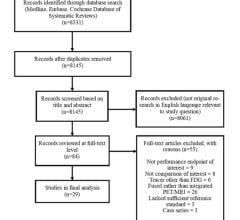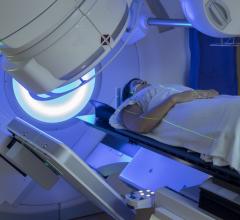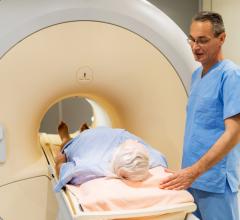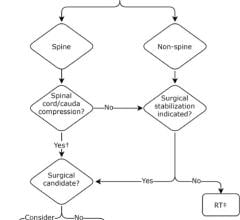
November 25, 2008 - Techniques such as axillary node sampling (ANS) and, more recently, sentinel node biopsy, in combination with radiotherapy (RT) have the potential to reduce toxicity for patients with early-stage breast cancer.
Since axillary treatment for patients with early-stage breast cancer can be associated with considerable morbidity, the study aimed to assess the outcome and morbidity of ANS in combination with radiotherapy. Researchers conducted a retrospective review of axillary treatment in patients with early stage breast cancer treated at the The Cancer Centre, University Hospital Birmingham, Queen Elizabeth Medical Centre, Birmingham, UK, between 1997 and 2003.
The treatment policy was to carry out four-node, Edinburgh-style ANS except in those cases with either palpably enlarged nodes or cytological confirmation of involvement or with clinically obvious node involvement at surgery when level 2 axillary node clearance (ANC) was carried out. Patients with involved nodes after ANS received postoperative axillary radiotherapy.
In total, 381 patients were included, 331 received ANS and 50 received ANC. The median follow-up was 6.5 years and overall survival at 5 years was 84 percent. Pathologically involved nodes were found in 152/331 (50 percent) ANS patients and 43/50 (86 percent) ANC patients. The rate of local recurrence (breast or chest wall) at 5 years was 4 percent (95 percent confidence interval 1-17 percent) in the ANC group and 2 percent (95 percent confidence interval 1-4 percent) in the ANS group. The nodal recurrence rate of those undergoing ANS was 3 percent (11/331) compared with 6 percent (3/50) for those treated by ANC. The rate of clinically significant lymphoedema at 5 years was significantly higher (P=0.01) in the ANC arm: 18 percent (95 percent confidence interval 9-32 percent) compared with 5 percent (95 percent confidence interval 3-8 percent) in those treated by ANS. Thirty-one cases received additional supraclavicular fossa irradiation because of the involvement of more than four nodes on ANS, which may not have been available with sentinel node biopsy and has implications for current practice.
The researchers concluded that selective ANS with the removal of a minimum of four nodes guides optimal locoregional treatment with good local control rates, low overall morbidity and may obviate the need for a second surgical procedure.
Source: doi:10.1016/j.clon.2008.06.006


 August 09, 2024
August 09, 2024 








